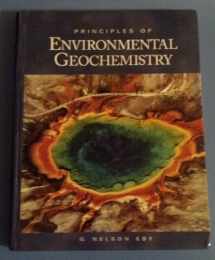
Principles of Environmental Geochemistry
Book details
Summary
Description
The basic philosophy of PRINCIPLES OF ENVIRONMENTAL GEOCHEMISTRY is to present chemical principles that are essential for understanding environmental problems and then show how these principles can be applied to real-world problems. The latter goal is achieved by including a number of case studies in each chapter. The book is process oriented, emphasizing the tools needed to understand environmental problems, and is not a recitation of environmental problems and issues. Chemistry topics are developed from first principles and the focus is on those principles that are most useful in the environmental field. This text is more accessible than the larger, higher-level environmental geochemistry books on the market that assume familiarity with chemical and quantitative background material. The topical coverage is broad, including extensive material on the isotopic and mineralogical aspects of environmental issues and a significant chapter on the atmosphere. Case studies are integrated throughout to show the application of the various principles to real-world problems, and many of the very extensive set of end-of-chapter problems encourage students to become familiar with the scientific literature on this subject.


We would LOVE it if you could help us and other readers by reviewing the book
Book review




